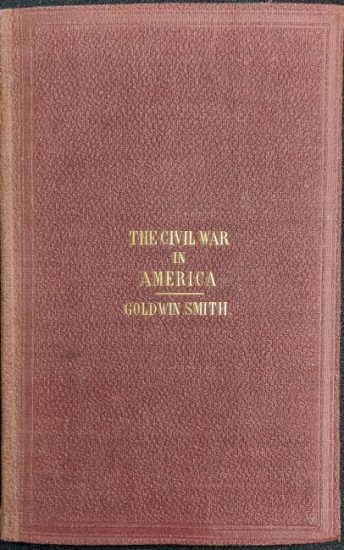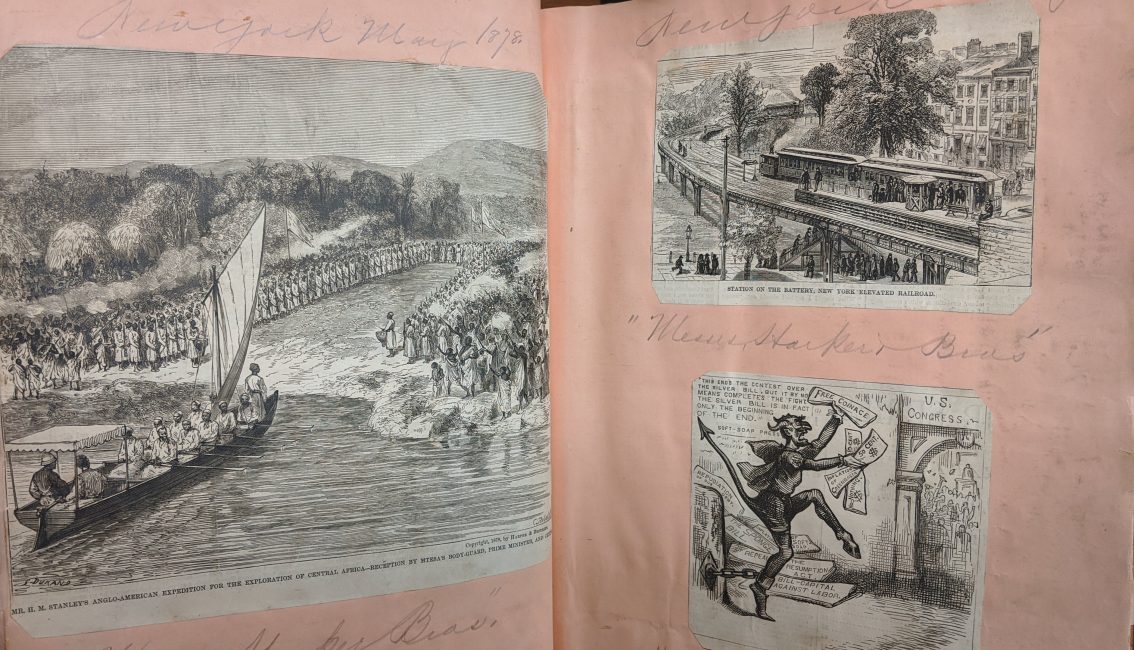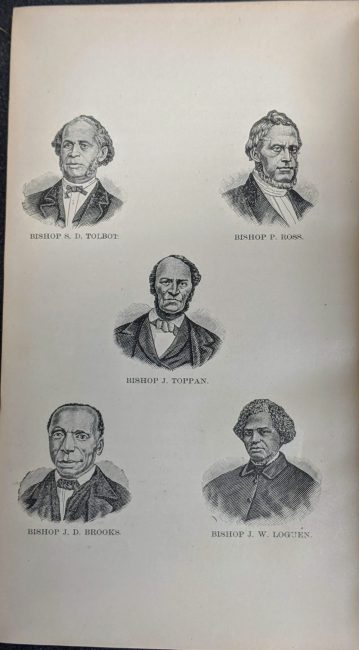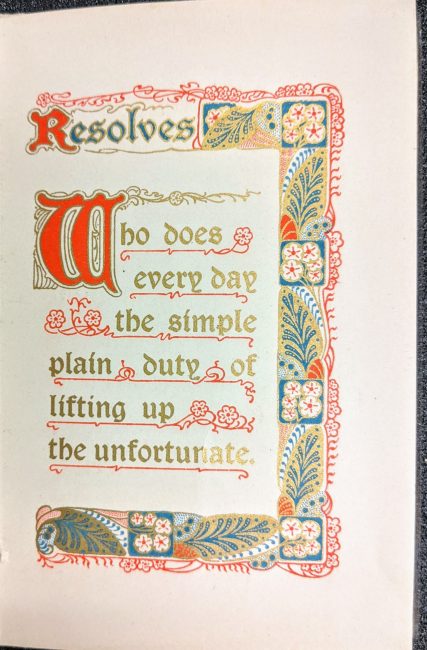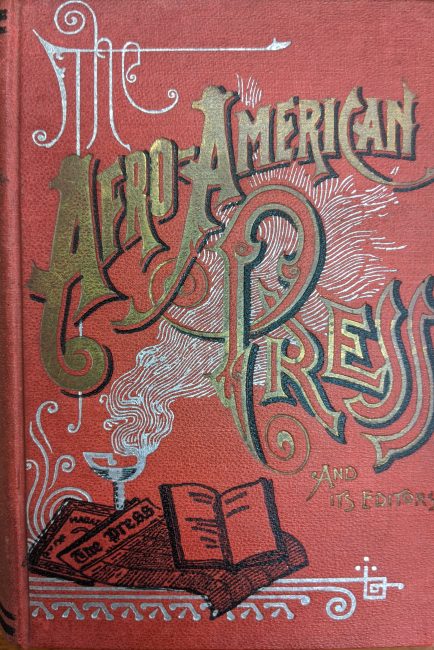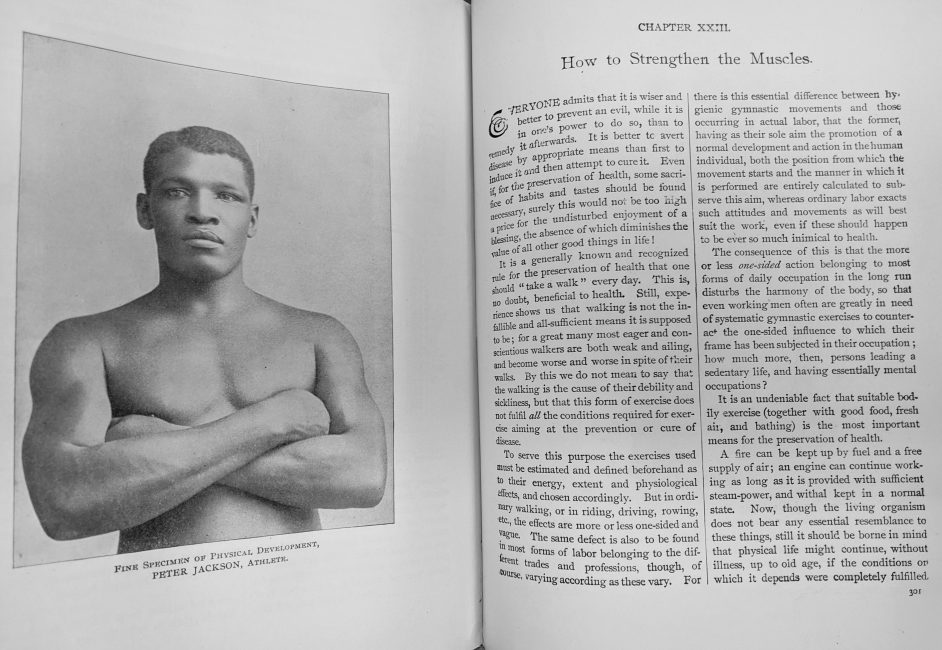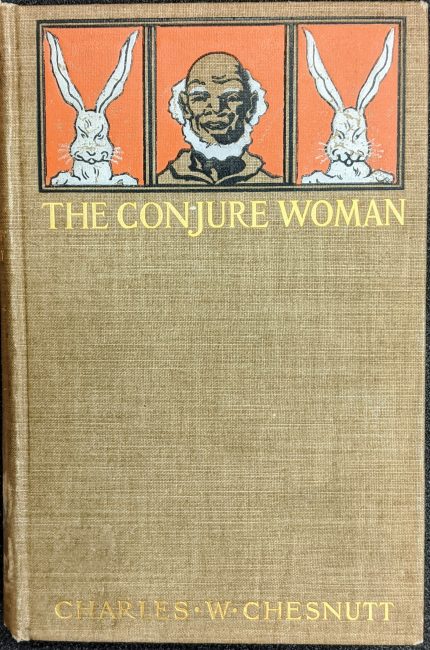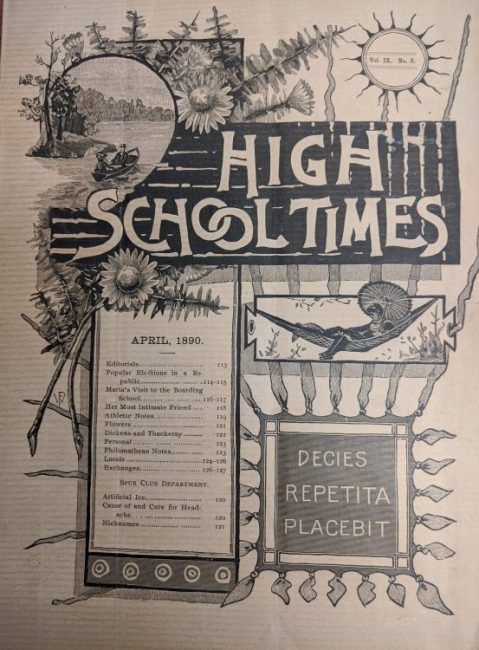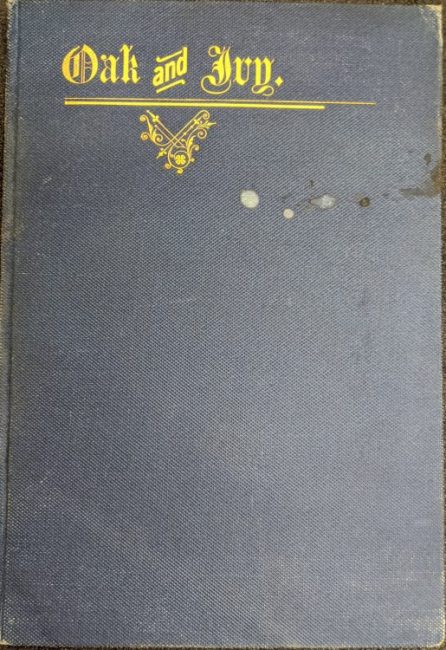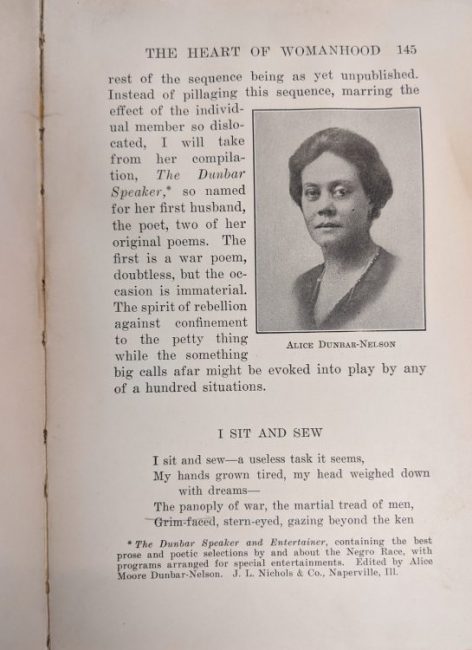This book from the Lincoln Collection is an example of the ideological complexities of abolition and the push for emancipation. British born Goldwin Smith, a powerful voice against the slave trade, had a building named for him at Cornell. Admittedly, however, Goldwin openly held anti-Semitic beliefs. Nevertheless, this published address shows that even a year out from the War its fundamental causes were already the subject of debate. In Smith’s words, “On the Southern side most were fighting for Slavery, but some for State Right. On the Northern side most were fighting against Slavery, but many were fighting for the Union.”
In a scrapbook dedicated to his then fiancée, Cassie Day, David Fox Nelson documents the remarkable story of his escape from slavery in a series of newspaper clippings. This carefully assembled documentary account serves as an introduction for an array of articles and illustrations that must have held some interest for Nelson and his fiancée. The scrapbook, which is dated 1878, underscores the fact that stories of resistance, resilience, escape, and assimilation were not only captured in the comparatively more familiar genre of the published slave narrative, but also in a range of different textual modalities.
This comprehensive history of the African Methodist Episcopal Zion Church was written by formerly enslaved A.M.E.Z. Church bishop, John J. Moore—founder of the first A.M.E.Z. Church in San Francisco. A remarkable feat for its time, the historical account covers the Church’s founding, the erection of the first church building, its break from the “White Methodist Episcopal Church,” and a detailed record of the conferences in both the antebellum and post-Civil War periods.
Next to such icons as Frederick Douglass, Sojourner Truth, and Harriet Tubman, Booker T. Washington was among the most renowned of those born into slavery that would achieve celebrity status later in life. He rose from relative obscurity to become one of the most important and influential thinkers of the period. In addition to his work in establishing and heading a nascent Tuskegee University, his turn of the century book, Up from Slavery (1901), was embraced by many, and famously disputed by W. E. B. Du Bois. Nevertheless, Washington had been developing his ideas for years prior to the release of this contentious work. Published just a year after his famous Atlanta Address of 1895, Daily Resolves (1896), a lesser-known title, is an interesting look at Washington’s inner-pensiveness. A book of affirmations styled as an illuminated manuscript with beautifully decorated letters and elegant typographic flourishes, the design of this pocket-sized edition is reminiscent of an early modern book of hours.
Irvine Garland Penn
Teacher, editor, and writer Irvine Garland Penn was born in 1867 in New Glasgow Virginia. A church leader as well as an active correspondent in the late nineteenth century Black Press, Penn served as an editor for The Lynchburg Laborer early in his career and later contributed to The Richmond Planet, The Virginia Lancet, and the New York Age as a correspondent. Continuing his education, he earned a master’s degree from Rust College in 1890 and a doctorate from Wiley College in 1908. Additionally, he was the co-author of The Afro-American Press (1891) and The College of Life or Practical Self-educator (1896), which arguably still hold their value as useful source books for the community.
Daniel Barclay Williams’ intellectual achievements were nothing less than extraordinary. Born in 1862 in Richmond, Virginia, Williams graduated from Richmond Normal School in 1877, and with high honors for his work in orthography. He went on to graduate from Worcester Academy in 1880, subsequently studying at Brown. A scholar of philosophy, mathematics, education, and ancient Greek and Latin, Williams was a distinguished classicist that could read German and Hebrew in addition to Latin and Greek. He joined the faculty of the Virginia Normal and Collegiate Institute (now Virginia State University) in 1885 where he was instrumental in building their Latin and Greek department, eventually serving as the Chair of Ancient Languages. A prolific lecturer and writer, Williams authored numerous articles and books over the course of his career. He was likewise noted for his contributions to education theory and pedagogy. This book, a collection of essays published at the height of his career, is a demonstration of his scholarly depth and range.
In addition to his work in education, activism, stenography, and law, Charles Chesnutt was one of the most eminent African American literary voices of the turn of the century. His novels and short stories were critically acclaimed, and his book The House Behind the Cedars (1900) was adapted as a silent race film in 1927. Born in 1858, the child of two free persons of color, Chesnutt is regarded for his choice to claim his African American heritage and identity even though he possessed outwardly European features that presented him with the possibility of “passing.” Many of his writings were dedicated to celebrating his cultural heritage including this book, a collection of folkish short stories published in 1899 that intended to help change popular perceptions of Black people in America during the period.
Born in Baltimore, Maryland in 1825, Frances Ellen Watkins Harper was an important writer, poet, teacher, and activist in the anti-slavery, suffrage, and temperance movements. A contributor to the Anglo-African, The New York Independent, The A.M.E. Church Review, and the Christian Recorder, Irvine G. Penn once described her as the “journalistic mother” of the post-emancipation generation. In addition to her novel Iola Leroy (1892), among the first novels written by an African American woman that maintained broad crossover appeal, she also published numerous poems and poetry collections. Featured here is a slim volume of her poetry published at the close of the nineteenth century.
Paul Laurence Dunbar and Alice Dunbar-Nelson
Designated “the Black Brownings,” Paul Laurence Dunbar and Alice Ruth Moore Dunbar-Nelson were the premier turn of the century power couple of the African American literary world. Paul and Alice were married in 1898 and separated by 1902. Their relationship was so full of romance and tragedy that is has become the subject of several plays, a critically acclaimed biography, and at least two operas. Yet, Dunbar and Dunbar-Nelson were important literary figures in their own right. Paul Laurence Dunbar was once the most celebrated and popular poets of color during his lifetime and Alice Dunbar-Nelson, herself a published poet and author, went on to build a commanding legacy of teaching, journalism, scholarship, and activism. Featured here are samples of their published work including an article from Dunbar’s time writing and editing his high school newspaper in Dayton, Dunbar’s first published book of poetry, Oak and Ivy (1893), and a selection of Dunbar-Nelson’s poetry published in an anthology that was compiled in 1923 by Robert Thomas Kerlin.

Printed by the D.C.-based Murray Brothers Press, a successful Black-owned publishing company, Walter E. Todd’s Fireside Musing (1909) is a charming example of pre-Harlem Renaissance African American poetry. The subjects of the poems are approachable in their quotidian familiarity, and as a collection, they epitomize the more tranquil aspects of life among the Black intelligentsia.

